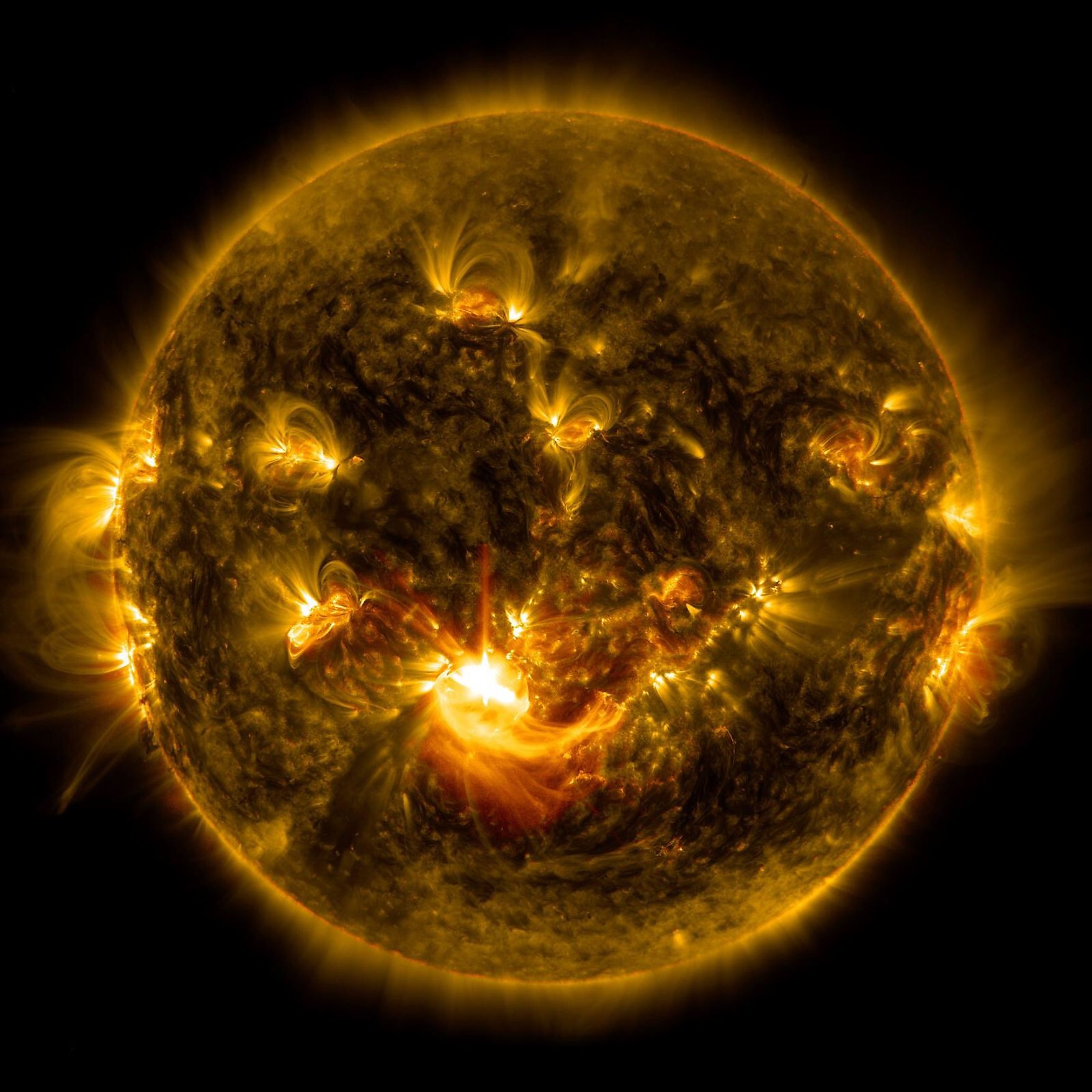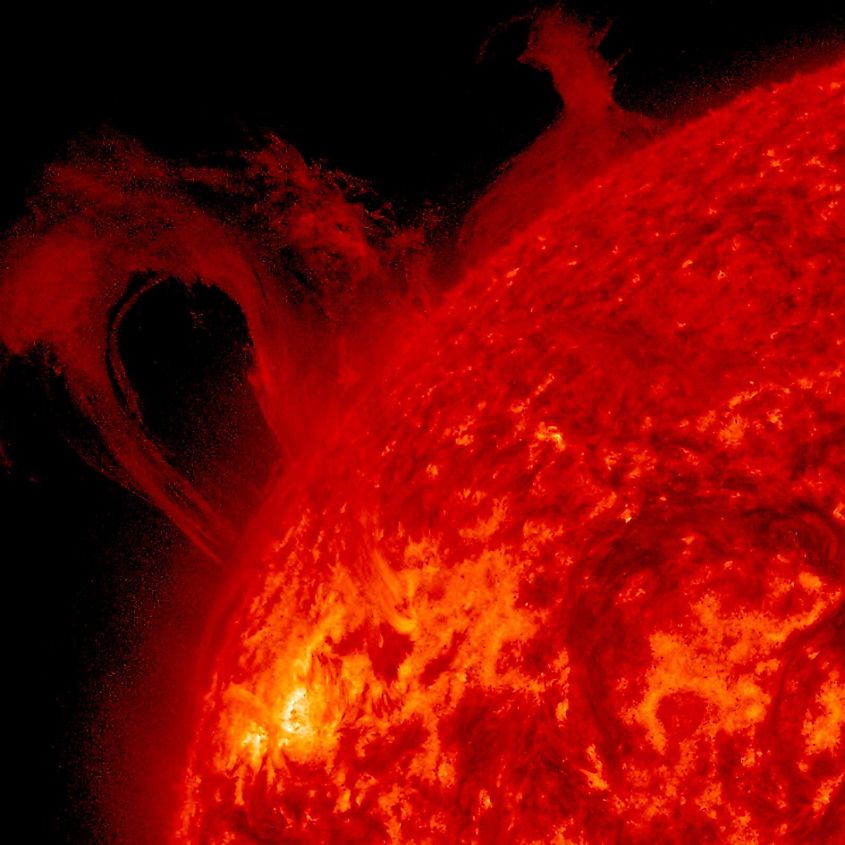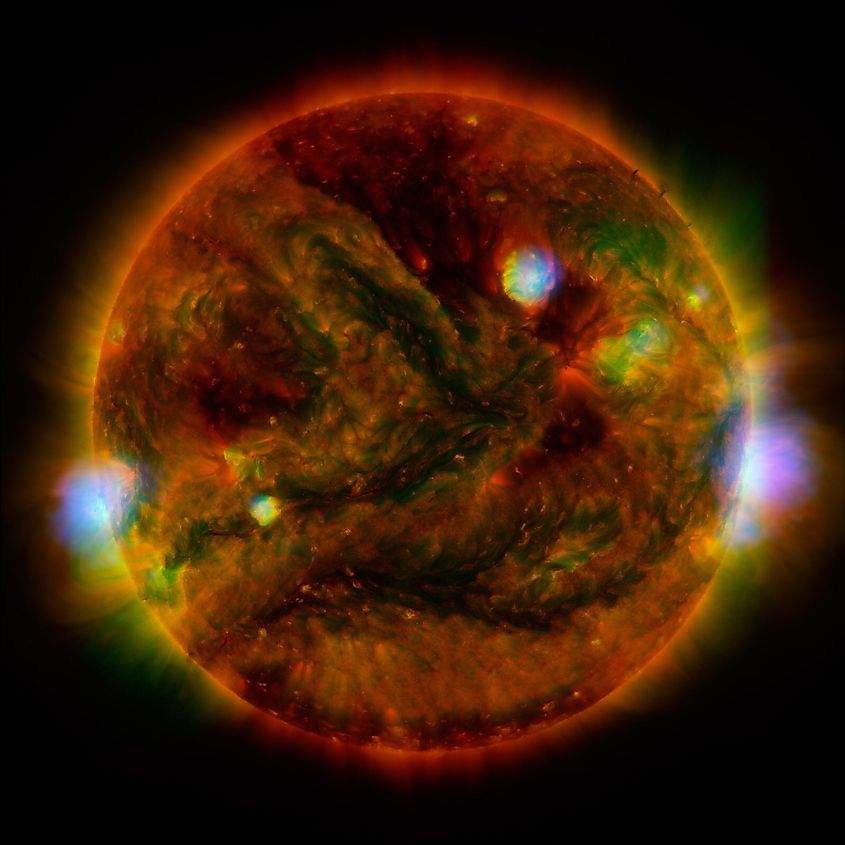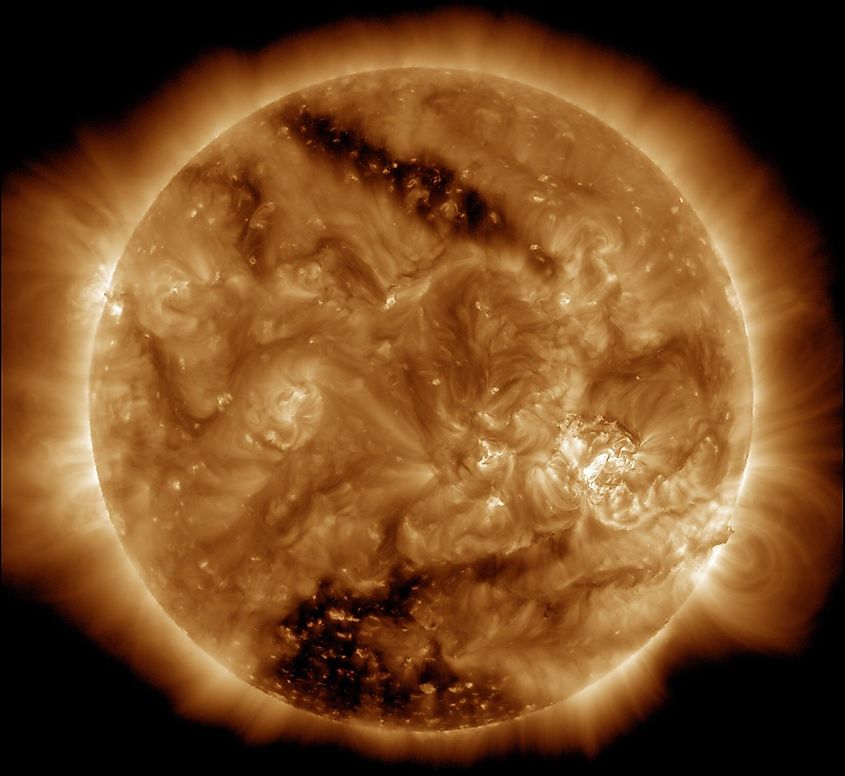
Does The Sun Have An Atmosphere?
The sun does have an atmosphere. The three layers mainly focused on are the photosphere, the chromosphere, and the corona. The photosphere is also known as the surface of the sun, while the chromosphere and the corona are referred to as the lower and upper atmosphere, respectively. As you get further away from the sun's core, it would make sense for the sun to get cooler. This, however, is not the case. As you progress through the layers of the sun’s atmosphere, the temperatures get increasingly higher. There are a few theories as to why this is the case but none have been concretely proven.
Photosphere

The photosphere is the visible surface of the sun where most of the energy is emitted. In the photosphere, you can see features known as sunspots. Sunspots are caused by differences in the magnetic field and can be the size of planets. These differences cause this layer of the sun to be cooler than the surrounding areas, as well as setting the stage for eruptions like solar flares. Solar flares are large eruptions of electromagnetic radiation from the sun. Temperatures in the photosphere average between 7,460 degrees Fahrenheit to 11,000 degrees Fahrenheit.
Chromosphere

Sitting above the photosphere is the chromosphere, also known as the lower atmosphere of the sun. With temperatures ranging from 6,700 degrees Fahrenheit to 14,000 degrees Fahrenheit, this layer goes against the rule of thumb that temperatures get cooler as we move away from the sun's core. Scientists have yet to come to a clear consensus as to why the sun’s atmosphere is hotter than the surface. One leading theory is that this layer is heated through the constant “nanoflares” in the photosphere. Nanoflare refers to solar flares that are one billionth the size of a regular flare. Nanoflares could theoretically reach temperatures as high as 18-million degrees Fahrenheit. This theory states that these explosions could be the cause of the higher temperatures in the sun’s atmosphere. The chromosphere is only visible during a solar eclipse because it is overshadowed by the bright photosphere. The red glow surrounding the sun during this phenomenon is the chromosphere. Alpha hydrogen is to blame for this red glow as it ionizes. The chromosphere extends for about 1,200-miles past the photosphere, leading into the corona.
Corona

The sun’s corona consists mainly of plasma and extends millions of miles into outer space. Like the chromosphere, this layer is visible during a solar eclipse but it can also be observed using a coronagraph. The corona is 300 times hotter than the chromosphere at two-million degrees Fahrenheit. Strong magnetic fields stop the extremely strong solar winds from escaping the atmosphere. Along with the nanoflares, it is theorized that this layer is so hot because of solar twisters. Solar twisters are massive tornados consisting of hot fluid gas with magnetic field lines keeping them stationary. Scientists estimate that there are around 11,000 solar twisters on the sun at any given time. The heat given off by these twisters is due to nuclear reactions within the sun’s core. Electromagnetic lines that keep the twisters in place are theorized to transfer this nuclear energy from the sun's core.
Temperatures of the Sun’s layers
| Sun's Layer | Hottest temperature |
|---|---|
|
Core |
27 million degrees Fahrenheit |
|
Photosphere |
11,000 degrees Fahrenheit |
|
Chromosphere |
14,000 degrees Fahrenheit |
|
Corona |
2 million degrees Fahrenheit |











